- Ficus Pumila: Is This Vining Plant Too Needy For Your Time? - August 29, 2021
- Peperomia Frost: Why Peperomia Caperata Is The Perfect Indoor Plant - August 19, 2021
- Wax Begonia: Can Begonia Semperflorens Survive At Home? - August 18, 2021
The Calathea Triostar is arguably the most beautiful of all the Calathea plants. The Calathea Trio is sure to stand out against your other green foliage rich in color and texture. Whilst this show-stopping plant might be enjoyable to look at, that doesn’t necessarily mean it’s easy to look after.
The Calathea Trio comes with its own set of demands– ones that you’ll have to abide by if you want to be the proud owner of a happy and healthy Calathea Trio. Don’t worry; the Calathea Trio might be a little high maintenance, but it’s nothing you can’t handle. In this post, we’re guiding you through all the necessary care and maintenance steps.
By the end of this post, you’ll be an expert in looking after this beautiful plant.
How to Identify Calathea Triostar
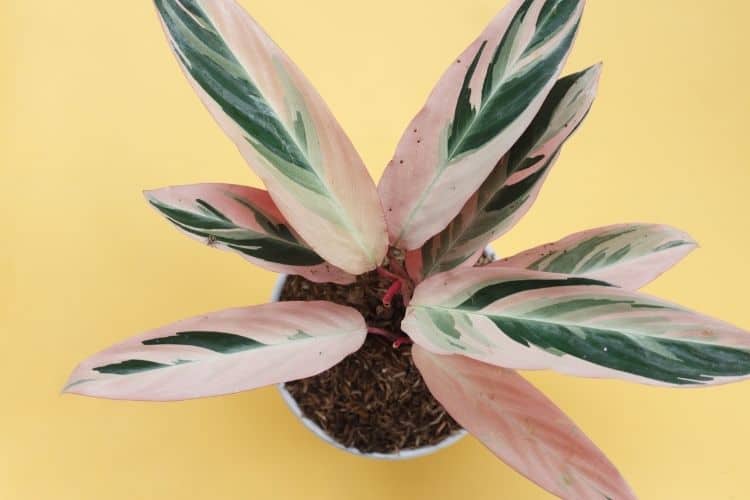
You’ll have no trouble spotting the Calathea Trio out of a lineup. This show-stopping plant has a vibrant, bushy head of colorful leaves that look good from every angle.
The long oval leaves on the Calathea Trio fade between green, cream, and burgundy pink. The variation of color across this plant is what makes it such a marvel. This colorful potted plant can reach 2 to 3ft in height and 1 to 2ft in width.
The Calathea Trio isn’t a neat or petite-looking plant. Instead, the color variation and mass of leaves give this plant a rugged, bushy appearance. Some may refer to the Calathea Triostar by its nickname, the Stromanthe sanguinea ‘Triostar.’
How to Grow Calathea Triostar From Seed
Although the Calathea Triostar might outshine its Calathea siblings, growing this plant variety demands the same methods and aftercare.
What you’ll need:
- A small pot or propagation tray
- Peat and coarse sand
- Plastic wrap or a propagation tray
Method:
- Mix a 1:1 ratio of peat and coarse sand for your soil
- Put this mixture in the pot or propagation tray
- Moisten the soil with fresh water
- Place the Calathea Trio seeds 0.5-1 cm deep in the soil
- Cover the tray with plastic wrap or propagation cover
- Check the soil remains moist at all times
- Repot the seedlings when they reach 3-4 cm
How to Propagate Calathea Triostar
Propagation should take place in spring or summer as these are peak growing seasons. Propagate can only happen when your plant is large enough to have separate clumps of root and stem.
- Carefully remove your plant from its pot
- Loosen the roots and soil with your fingers
- Using a pair of sharp shears, make a clean cut, ensuring your cutting contains roots and leaves.
- Plant your new cutting in pots with fresh soil.
- Replant your original Calathea Triostar in its pot with fresh soil
- Water all plants until the soil is moist.
- Keep your new plants in a warm area with indirect sunlight.
- Make sure all soil remains moist but not soggy.
Calathea Triostar Growing Conditions
Due to being a tropical plant, the Calathea Triostar has specific growing conditions. However, these conditions aren’t too complicated and can be created artificially in the home.
How to Plant Calathea Triostar
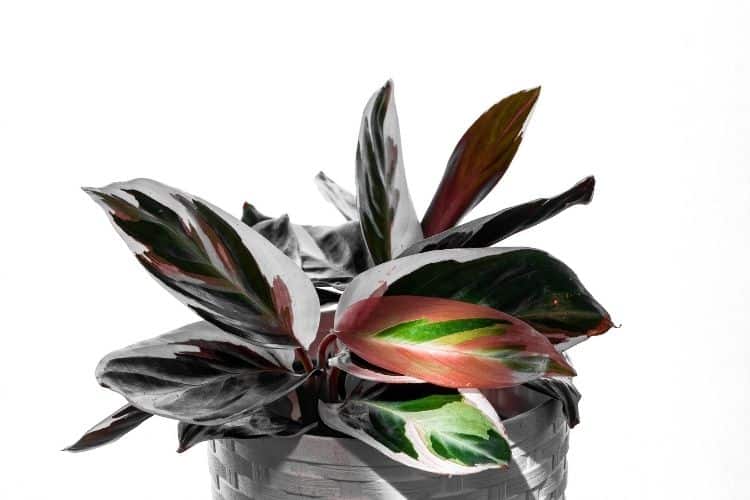
Once you’ve planted your Calathea Triostar, you can begin providing the right care needed for a happy and healthy tropical potted plant. First, let’s take a look at how to plant and care for the Calathea Triostar in the right way:
Calathea Triostar Potting & Soil
Tropical plants require well-draining soil due to the high levels of water they need. Keeping your Calathea Triostar hydrated is imperative, but overwatering is a common mistake many Calathea Triostar owners make. Investing in well-draining soil helps reduce the risk of overwatering.
To further assist your plant drainage, you can purchase a pot with drainage holes in. These holes help any excess water drain from your plant, reducing the risk of root rot.
Calathea Triostar Water Requirements
On average, the Calathea Triostar requires watering every five to ten days. However, this is just an estimate, and you should always check the condition of the soil before watering. The soil your Calathea Triostar is in needs to remain moist. As a plant owner, you need to monitor the soil to ensure it’s never too dry or too wet.
Purchasing a mister can help promote healthy leaves if you live in an area with low humidity. Dry or discolored leaves suggest your plant is dehydrated, and so, a mister can help improve these conditions.
Calathea Triostar Light Requirements
Controlling the light exposure your plants are subject to is generally a bit more tricky. For example, the Calathea Triostar enjoys high heat but indirect bright sunlight. If you consider the kind of exposure the Calathea Triostar would have received in its native tropical environment, this can help us understand the plant requirements.
Try to position your Calathea Triostar on a windowsill that receives partial light exposure throughout the day. Positioning your plant in direct sunlight for too long can cause sunburn. Make sure to move your Calathea Triostar out of the sun if it’s been sitting there too long.
Best Calathea Triostar Fertilizer
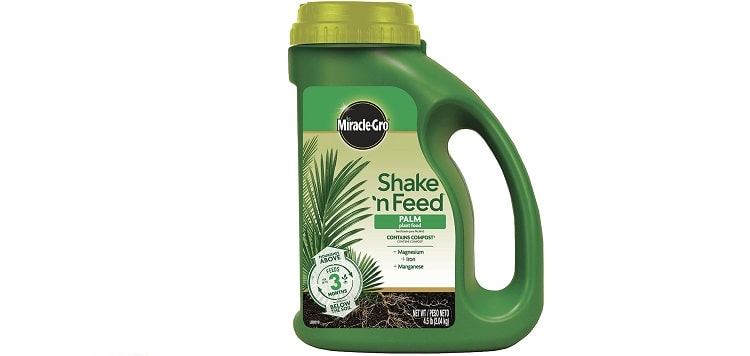
The Calathea Triostar doesn’t require fertilizer to grow, but some owners choose to use fertilizer to promote growth in certain seasons. If you choose to use fertilizer on your Calathea Triostar, make sure to use this during the spring and summer months, as these are the Calathea Triostar’s growing seasons.
Best Calathea Triostar Companion Plantings
Whilst many people know the Calathea Triostar as an indoor plant, the Calathea Triostar lives outside too. Those who live in a tropical climate may have seen beds of Calathea Triostar outside.
If your Calathea Triostar is outside, make sure to surround it with other Calathea plants or similar tropical plants with the same requirements. Due to the natural tropical climate, you won’t have to tend too much to your tropical plants.
An indoor Calathea Triostar should be in its own individual pot. The plants you choose to surround your potted Calathea Triostar with don’t matter. Just make sure to attend to all your potted plants with their individual needs and maintenance.
Calathea Triostar Diseases and Common Problems
Limp Stem

A limp stem means your Calathea Triostar is cold. This is quite common in naturally colder climates. Move your Calathea to a warmer spot with more sunlight exposure. You can also invest in a humidifier to increase the humidity levels inside your home.
Falling Leaves
Falling leaves mean your plant is dehydrated. To rehydrate your Calathea, you need to remove your Calathea Makoya from its pot and submerge it in water.
Let your Calathea Triostar dry naturally before repeating the same method two to three times. After your Calathea Triostar is dry, repot the plant in fresh soil. Use a mister to improve hydration.
Pests
The first step to take when you encounter pests is to make sure your plant isn’t in contact with any other houseplants. Secondly, run a stream of water from your plant to wash away pests. Finally, if this fails, purchase a chemical pest remover.
Discolored Leaves
Discolored leaves indicate your plant isn’t getting the right nutrients. Using fresh, filtered water will improve your plant’s health and coloring.
Calathea Triostar Treatments and Maintenance
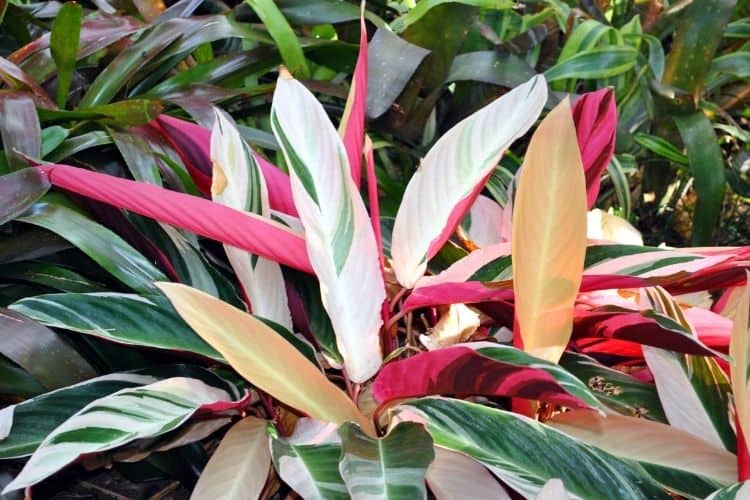
The Calathea Triostar doesn’t require any treatments or maintenance outside its basic care. However, some choose to use tropical plant fertilizers and indoor humidifiers to create a similar environment to that the Calathea Triostar originates from.
Where to Buy Calathea Triostar Seeds Online
Not many people choose to grow the Calathea Triostar from seed. If you’re a keen gardener or enthusiastic plant owner, this might be an endeavor you want to embark on. If so, you can purchase Calathea Triostar seeds from one of these online locations:
- Green Seed Garden (mixed Calathea seeds)
- eBay (mixed Calathea seeds)
Where to Buy Mature Calathea Triostar Online
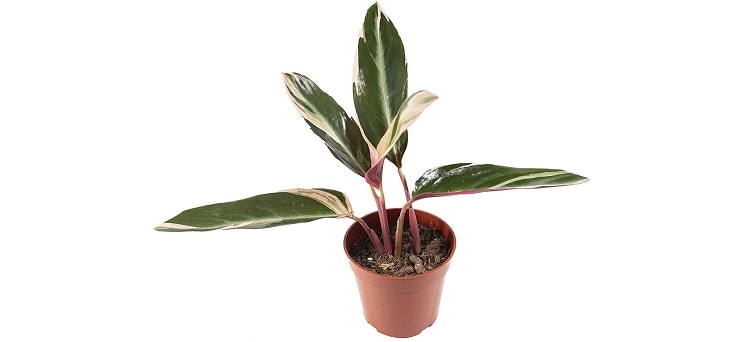
If you’d rather skip the growing stage and have a beautiful bushy Calathea Triostar fully grown in your home, you can purchase a mature plant. Here are a few locations you can pick up the Calathea Triostar online:
FAQs
Question: Will my Calathea Triostar purify the Air?
Answer: Yes! The Calathea Triostar is a natural air purifier, so it will naturally purify the air in your home.
Question: Can I Keep a Calathea Triostar in my Bedroom?
Answer: The Calathea Triostar is a non-toxic houseplant, meaning it can be placed in the bedroom. Adding a Calathea Triostar to your bedroom can add a little bit of light and vibrancy to your interiors!
Question: How Fast Will My Calathea Triostar Grow?
Answer: Calathea Triostar plants are considered relatively slow growers. If you’re worried about having to constantly re-pot your plant, rest assured, this plant will only need repotting every few years.
When you re-pot your Calathea Triostar, make sure to do it during the spring and summer months as this is the peak growing period.
Research

